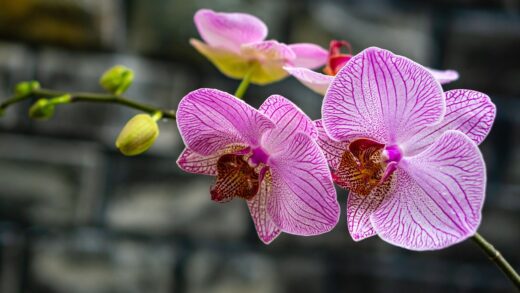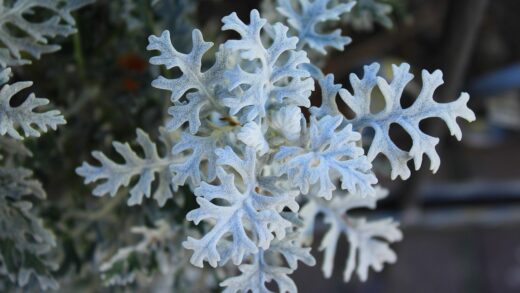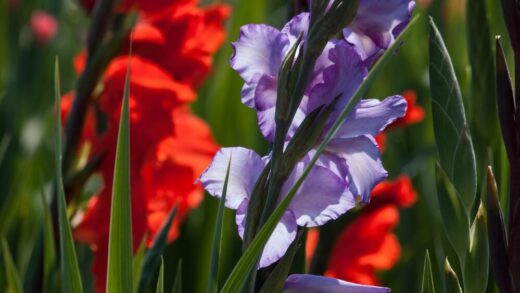Successfully introducing a Japanese maple into a landscape is a process that begins long before the first shovel of soil is turned. The act of planting is a critical moment that sets the foundation for the tree’s entire life, influencing its health, vigor, and ultimate beauty for years to come. Proper site selection, meticulous soil preparation, and careful handling of the root system are paramount to ensuring the tree not only survives but thrives. Similarly, the art of propagation, whether through seeds, cuttings, or grafting, offers a rewarding journey into creating new life, allowing a gardener to replicate a cherished specimen or grow a unique tree from its very beginning. These practices, rooted in both science and patience, are fundamental skills for any enthusiast wishing to cultivate these elegant trees.
Choosing the right specimen and time to plant
The journey of planting a Japanese maple starts with selecting a healthy, well-structured plant from a reputable nursery. When inspecting potential trees, look for a specimen with a strong central leader or a pleasing multi-stemmed form, depending on the desired shape. The branches should be well-spaced, not crowded or crossing, and the trunk should be free of any wounds, scars, or signs of insect damage. Check the root system if possible; in a container-grown plant, the roots should be light-colored and fibrous, not dark, mushy, or tightly circling the bottom of the pot, which indicates it is root-bound. A healthy plant will have vibrant, appropriately colored leaves for the season, with no signs of disease or stress like spotting or wilting.
The timing of your planting is a critical factor that can significantly impact the tree’s ability to establish itself. The two best seasons for planting Japanese maples are autumn and spring. Planting in the autumn, after the summer heat has subsided but before the ground freezes, allows the root system to grow and establish itself throughout the dormant winter months, giving the tree a strong start for the following spring. Spring planting is also an excellent option, done after the last frost has passed, which allows the tree the entire growing season to settle in before facing its first winter. Avoid planting in the middle of summer, as the combination of intense heat and transplant shock is often too stressful for the tree to overcome.
Before bringing your new tree home, you should have already prepared the ideal planting location. As discussed previously, this means a site with protection from afternoon sun and harsh winds. Having the spot chosen and the soil tested and amended beforehand streamlines the planting process and minimizes the amount of time the tree’s roots are out of the ground or confined to its nursery pot. This forethought reduces stress on the plant and ensures it moves into an environment that is immediately ready to support its growth. Pre-planning is the hallmark of a successful gardener and is especially important with sensitive trees like Japanese maples.
Finally, consider the specific cultivar and its mature size when making your selection. Japanese maples range from small, dwarf shrubs that may only grow to a meter in height to medium-sized trees that can reach over seven meters. Research the specific variety you are interested in to understand its growth habit, ultimate dimensions, and specific light or soil preferences. Choosing a tree that is appropriate for the scale of your garden and the conditions you can provide prevents future problems, such as having to relocate a tree that has outgrown its space or struggling with a cultivar that is not suited to your climate.
More articles on this topic
The step-by-step planting process
Once you have your chosen specimen and the ideal location, the physical process of planting can begin. The first rule is to dig a hole that is appropriately sized, which means it should be two to three times as wide as the tree’s root ball, but no deeper. Digging a wide, shallow hole encourages the roots to spread out horizontally into the surrounding amended soil, which is where they will find the most oxygen and nutrients. A common and detrimental mistake is to dig the hole too deep, which can cause the tree to settle over time, leading to the root flare being buried, which can promote rot and eventually kill the tree.
Carefully remove the tree from its nursery container. If it is in a plastic pot, you can gently squeeze the sides to loosen it or, if necessary, cut the pot away. For trees in a burlap-wrapped (B&B) root ball, place the entire ball in the hole and then cut away the twine and as much of the burlap as you can without disturbing the roots. Some modern burlap is treated to prevent rot and will not break down in the soil, so it’s best to remove it. As you handle the root ball, be gentle and try to keep it as intact as possible to minimize transplant shock.
Positioning the tree in the hole correctly is a crucial step. The top of the root ball should be slightly above the level of the surrounding soil. You can use a long, straight object like a shovel handle placed across the hole to check the height. This slight elevation accounts for any settling that will occur and ensures the root flare—the point where the trunk widens to meet the roots—remains exposed to the air. Once the height is correct, make sure the tree is standing straight from all angles before you begin to backfill the hole. This is your last chance to make adjustments to its orientation.
Begin backfilling the hole with the amended soil you prepared earlier. Add the soil in stages, gently firming it down with your hands as you go to eliminate any large air pockets. Avoid heavily compacting the soil with your feet, as this can damage the fine feeder roots and reduce the soil’s ability to drain properly. Once the hole is filled, create a shallow basin or berm of soil around the outer edge of the planting hole. This will act as a reservoir, helping to direct water to the root ball during the first few months. Finish by watering the tree thoroughly and deeply to settle the soil and provide essential moisture.
More articles on this topic
Propagation from seeds
Growing a Japanese maple from seed is a journey that requires significant patience, but it can be an incredibly rewarding experience. The first step is to collect ripe seeds in the autumn, typically after the winged samaras have turned from green to a reddish-brown and have started to dry. It is important to note that seeds from cultivated varieties will not grow true to the parent plant; the resulting seedlings will be highly variable and may resemble the original species more than the specific cultivar. This genetic variability, however, is part of the excitement for many hobbyists.
Once collected, the seeds need to undergo a process called stratification to break their natural dormancy. Japanese maple seeds have a double dormancy that requires both a warm, moist period followed by a cold, moist period to trigger germination. First, soak the seeds in warm water for 24 to 48 hours. After soaking, place the seeds in a sealable plastic bag with a moist medium like sphagnum moss or a mix of peat and sand. Keep this bag in a warm place (around 20-25°C) for 60 to 90 days, checking periodically to ensure the medium remains moist.
Following the warm stratification period, the seeds must be exposed to cold. Move the bag containing the seeds and moist medium into a refrigerator (around 2-5°C) for another 90 to 120 days. This cold period simulates winter and is essential for breaking the final stage of dormancy. Towards the end of this cold treatment, you can start checking the bag for any signs of germination, such as the emergence of a small root. Seeing this first sign of life is a thrilling moment for any propagator.
After the cold stratification period is complete, the seeds are ready to be planted. Carefully sow them about one centimeter deep in pots filled with a well-draining seed-starting mix. Place the pots in a location that receives bright, indirect light and keep the soil consistently moist but not waterlogged. Germination can be slow and sporadic, so be patient. Once the seedlings have developed a few sets of true leaves and are large enough to handle, they can be carefully transplanted into individual pots to continue growing until they are large enough to be planted in the garden.
Propagation from cuttings
Propagating Japanese maples from cuttings, also known as vegetative propagation, is a method that produces a new plant genetically identical to the parent. This is the preferred method for replicating a specific cultivar. The best time to take cuttings is in the late spring or early summer when the tree has produced new, vigorous growth that is still soft and flexible but is beginning to firm up. This type of wood is known as softwood or semi-hardwood and has the highest chance of successfully rooting.
To take a cutting, select a healthy, vigorous shoot from the current season’s growth. Using a sharp, sterilized pair of pruning shears or a knife, cut a 10-15 centimeter section from the tip of the branch. Make the cut just below a leaf node (the point where a leaf attaches to the stem). Carefully remove the leaves from the lower half of the cutting, leaving two or three sets of leaves at the top. If the remaining leaves are very large, you can cut them in half horizontally to reduce moisture loss through transpiration while still allowing for photosynthesis.
To increase the chances of rooting, dip the bottom end of the cutting into a rooting hormone powder or gel. This product contains auxins that stimulate root development. Gently tap off any excess powder. Immediately insert the treated end of the cutting into a pot filled with a sterile, well-draining rooting medium, such as a mix of perlite, vermiculite, and peat moss. The medium should be pre-moistened. Insert the cutting about halfway into the medium and gently firm the soil around it.
Creating a humid environment is crucial for the survival of the cuttings until they develop their own root systems. You can achieve this by covering the pot with a clear plastic bag or placing it inside a propagator with a lid. Place the covered cuttings in a warm location with bright, indirect light, but out of direct sunlight which can cause them to overheat and dry out. Check the cuttings regularly, ensuring the medium stays moist and airing them out every few days to prevent fungal growth. Roots can take several weeks to several months to form, and you can test for rooting by giving a gentle tug on the cutting; if you feel resistance, roots have likely formed.
The art of grafting
Grafting is the most common commercial method for propagating named Japanese maple cultivars, and it is a technique that combines the art and science of horticulture. This process involves joining a piece of a desired cultivar (the scion) onto the root system of a hardier, seed-grown Japanese maple seedling (the rootstock). This ensures that the resulting tree has the desirable characteristics of the cultivar (like leaf color and shape) combined with the vigorous and reliable root system of the rootstock. For hobbyists, mastering grafting is a significant achievement that allows for the precise propagation of favorite varieties.
The success of grafting depends heavily on timing and technique. The most common time to graft Japanese maples is in the late winter or very early spring when both the scion and rootstock are dormant. The scion wood is typically collected from the parent tree in mid-winter and kept cool and moist to prevent it from breaking bud prematurely. The rootstock is a one- or two-year-old seedling of a standard Acer palmatum or Acer japonicum that has been grown in a pot. The process requires a very sharp, clean grafting knife to make precise cuts.
Several grafting techniques can be used, but the side-veneer graft is one of the most popular for Japanese maples. This involves making a shallow, downward-angled cut into the side of the rootstock, about 5-10 centimeters above the soil line. A corresponding cut is made on the scion, which is a small piece of stem with at least one healthy bud. The scion is then inserted into the cut on the rootstock, carefully aligning the cambium layers (the green layer just under the bark) of both pieces. This alignment is absolutely critical, as the cambium is where the vascular tissues will fuse and grow together.
Once the scion is perfectly fitted into the rootstock, the graft union must be secured and protected. This is typically done by wrapping the union firmly with grafting tape or rubber grafting strips. This wrapping holds the pieces together, maintains pressure for good cambium contact, and prevents the union from drying out. The newly grafted plant is then placed in a humid environment, like a greenhouse or a cold frame, and kept out of direct sunlight. The healing process can take several weeks, and success is indicated when the scion’s bud begins to swell and grow, signifying that the graft has taken.


















